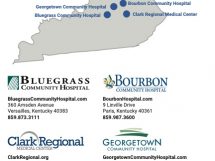LEXINGTON, Ky. (Nov. 18, 2013) — Kentucky leads the nation in both lung cancer incidence and deaths, with an incidence rate of 80 per 100,000. Kentucky’s death rate of 75 per 100,000 residents is 36 percent above the national average of 55, but an advance in medical scanning technology could lead to better outcomes.

Smoking tobacco is the culprit, causing roughly 85 percent of all lung cancer deaths. Men who smoke are 23 times more likely to develop lung cancer than a non-smoker. Women who smoke are 13 times more likely to develop this devastating cancer. Roughly 29 percent of Kentuckians are smokers, compared to 21 percent nationally.
Lung cancer kills more Kentuckians every year than the next eight most common cancers combined. KentuckyOne Health, a statewide healthcare system, is working to reduce lung cancer incidence and death in the state through advanced screening technologies and smoking cessation programs.
KentuckyOne Health announced that its facilities now offer low-dose CT scans, the latest tool in the early detection of lung cancer. A chest X-ray served as the previous method. The new technology employing low-dose radiation makes a series of very detailed pictures of the lungs, scanning the body in a spiral path. This gives doctors incredible detail and allows them to see even the smallest cancer growth.
Data shows that using low-dose CT is four times more likely to pick up a mass than a traditional chest X-ray, allowing for earlier detection and a better chance at survival.
“The low-dose CT scan is a significant advancement in our ability to find lung cancer in its early stages.” said Goetz H. Kloecker, M.D., director of the Thoracic Oncology Clinic at the James Graham Brown Cancer Center, part of KentuckyOne Health, and University of Louisville associate professor of internal medicine. “Early detection gives you more options for treatment, including taking advantage of clinical trials, but the best prevention for lung cancer is to stop smoking or never start.”
Lung cancer forms in the tissues of the lung, usually in the cells lining the air passages. There are two main types of lung cancer – small cell lung cancer and non-small cell lung cancer. Small cell cancer progresses quickly and is likely to spread beyond the lungs. Non-small cell cancer is more common, grows more slowly and is less likely to spread.
More Americans die from lung cancer than any other type of cancer. In 2009 (the most recent data available) it accounted for 14 percent of cancer diagnosis and 28 percent of all cancer deaths. More than half of the people with lung cancer will die within just one year of diagnosis.
“By the time it shows any symptoms, lung cancer has often already spread throughout the lungs, or in some cases, to other places in the body,” said Jessica Moss, MD, Saint Joseph Hematology/Oncology Associates, part of KentuckyOne Health. “With innovations in screening, we’re able to detect lung cancer early, before symptoms appear, which ultimately helps save lives.”
Kloecker is part of the multidisciplinary team of lung cancer specialists treating patients. The team includes a medical oncologist, surgical oncologist, pathologist, and radiation oncologist, with additional support from other specialists. Together, the team develops a treatment plan tailored to each individual. It meets regularly to discuss patient cases and progress.
Lung cancer can be difficult to spot because symptoms are non-specific. Some symptoms can include:
• Coughing that gets worse and doesn’t go away
• Chest pain
• Shortness of breath
• Wheezing
• Coughing up blood
• Feeling very tired all the time
• Weight loss with no known cause
If a symptom persists in someone with a history of smoking, they should consult their physician immediately. Anyone who has smoked 30 pack years (the number of years that someone has smoked one pack a day) or more and is between the ages of 55 and 79 is recommended for screening.
Other exposures can lead to lung cancer. Radon, a gas that naturally occurs in some parts of the country, has been identified as the number one cause of lung cancer in non-smokers. Other exposures, like asbestos, can also lead to lung cancer.
To learn more about lung cancer screenings and smoking cessation opportunities available in your area and around the state, call KentuckyOne Cancer Care at 855-34KYONE (59663).




















Add Comment